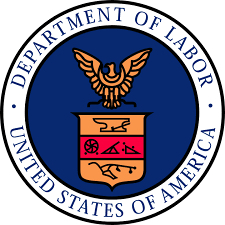By Joshua B. Zugish
On July 20, 2020, the U.S. Department of Labor (DOL) shared additional guidance on return-to-work issues under the Families First Coronavirus Response Act (FFCRA). The updated guidance contains important information for employers as they focus on returning employees to work and balancing employee needs against the backdrop of COVID-19 and ongoing business operations. Employers and workers alike face many challenges in the current climate and the FFCRA, together with a variety of other workplace laws, seeks to mitigate the impacts of those challenges.
A Quick Refresh – What is the FFCRA and Who does it Apply To?
The FFCRA intersects with the Family and Medical Leave Act (FMLA) and Fair Labor Standards Act (FLSA) in requiring certain employers to provide employees with paid sick leave or expanded family and medical leave for specified reasons related to COVID-19. Covered employers include some public employers and all private employers with 500 or less employees. Small businesses with fewer than 50 employees may qualify for exemptions related to employee leave for school closings or childcare unavailability. To qualify, those small businesses must demonstrate that FFCRA compliance would jeopardize the viability of the business as a going concern.
In general, the FFCRA requires employers of fewer than 500 employees to:
- Provide employees up to 80 hours of paid sick leave if they are exposed to COVID-19 and required to quarantine (at their regular rate of pay).
- Provide up to 80 hours of paid sick leave (at 2/3 the regular rate of pay) because the employee is unable to work because of a bona fide need to care for someone in quarantine or to care for a child whose school or care facility is closed due to COVID-19.
- For employees who have been employed at least 30 days, the FFCRA also allows for up to an additional 10 weeks of paid expanded family and medical leave (at 2/3 the regular rate of pay) if an employee is unable to work because their child’s school or care facilities are closed due to COVID-19.
And who foots the bill for all this paid leave? The FFCRA provides tax credits to covered employers to reimburse the cost of providing paid leave.
What does the new return-to-work guidance address?
While previous DOL guidance addressed worker’s rights to leave for school, camp or other child care reasons during the summer months, the new guidance addresses FFCRA and FMLA leave; returning to work in the same or equivalent position; COVID-19 testing as a condition of returning to work; and retaliation issues.
Furloughs, the FFCRA and FMLA Leave
Employee furloughs have been widespread in response to the economic impacts of COVID-19. The new guidance verifies that any period workers were on furlough does not count against their leave entitlement under the FFCRA or FMLA. Consider an employee that was eligible for extended FMLA leave, and used six weeks of leave before a company furlough was implemented. Upon returning to work after the furlough, the employee is still entitled to the remaining six weeks of leave. Notably, the DOL specifically states that the employee’s furlough period cannot be extended just because they would need to take FFCRA leave if called back to work.
Returning to Work in the Same or Equivalent Position
The new guidance verifies that employees returning to work after paid FFCRA leave must be restored to the same or equivalent position they previously held. Employers do have some discretion in bringing an employee back to work in a position requiring less interaction with co-workers or to require telework. Similar to return to work concepts established under traditional FMLA leave, employers should be thoughtful when returning an employee to work in a different position to avoid arguments of retaliation and some adverse action tied to the employees use of leave.
COVID-19 Testing and Returning to Work
Importantly, employers may also require employees to test negative for COVID-19 before returning to work. It merits mention that the EEOC has also issued guidance on this issue due to possible implications under the Americans with Disabilities Act (ADA).
Retaliation
The new guidance expressly states that employers may not discriminate or retaliate against employees for the use of FFCRA leave. This includes a restriction on employers using the anticipated need for FFCRA leave upon reopening as a negative factor in an employment decision.
When does the FFCRA Expire?
The FFCRA expires on December 31, 2020. It is unclear whether it will be extended by Congress or allowed to expire. As in so many areas of American life, much depends on the impacts of COVID-19 as we trudge through the fall season and how employers and employees continue to be impacted.
What should employers be mindful of going forward?
It is critical for employers to understand and be aware of how the FFCRA may impact their business and their employees. At minimum, it is important to assess application of the FFCRA to your business. If it does apply, consider whether you may qualify for any exemptions if your workforce is 50 employees or less. If the FFCRA applies and there are no applicable exemptions, be mindful of paid leave obligations and communicate with your employees about their rights under the FFCRA. If you have implemented a furlough, be aware that employees may still be entitled to leave under the FFCRA when they return. For employees returning to work after taking leave, be thoughtful about whether they are returning to the same position. If they are returning to a different position, be sure it is equivalent to avoid arguments of retaliation.
The FFCRA is part of a complex legal web that intersects with the FMLA, FLSA and may also have ADA implications. Employers are encouraged to utilize DOL resources and qualified counsel to understand FFCRA implications on their business and employees.

Joshua B. Zugish, Of Counsel
Ogletree Deakins Birmingham
Joshua.Zugish@ogletree.com
www.ogletreedeakins.com
